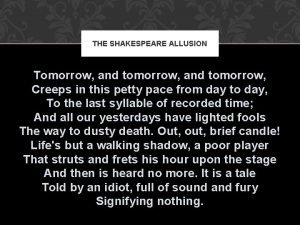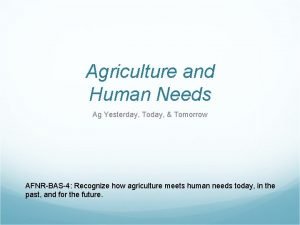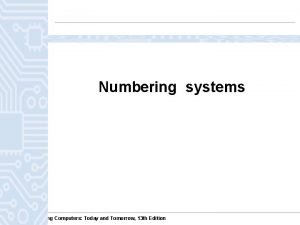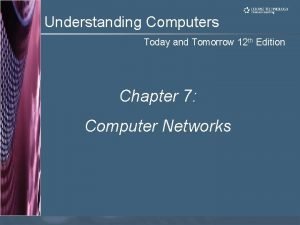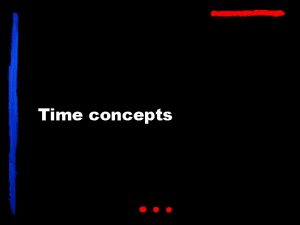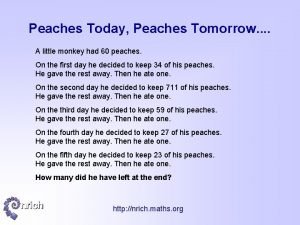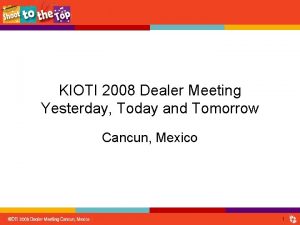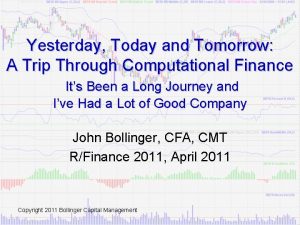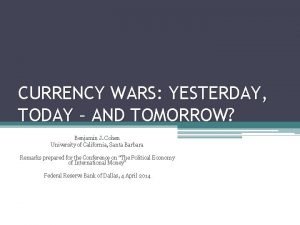Energy Yesterday Today and Tomorrow Gateway Energy and















- Slides: 15

Energy Yesterday, Today, and Tomorrow Gateway – Energy and the Environment © 2011 Project Lead The Way, Inc.

Sustainable Energy • Meets the needs of the present without compromising the ability of future generations to meet their needs • Includes renewable and inexhaustible energy sources – Hydroelectric, solar, wind, wave and tidal power, geothermal and biomass

Yesterday – Burning Wood • Heat • Light • Cooking

Yesterday – Fossil Fuels • Coal, oil, and natural gas formed from plants and animals that lived up to 300 million years ago. • Fossil fuels are found in deposits beneath the Earth’s surface. • Fossil fuels are an exhaustible energy source because it takes millions of years for them to form. • In the 19 th century we started to extract and use fossil fuels for energy.

Energy Today • • 84% of U. S. energy consumption is still fossil fuels. 25% of U. S. energy needs are imported. 57% of the petroleum used in the U. S. is imported. What sources are changing? 2008 Renewables 7% Petroleum 40% 2013 Nuclear 8% Natural Gas 22% Coal 23% U. S. Energy Information Administration, Monthly energy Review, Table 1. 3 and 10. 1 (May 2014), 2013 data http: //www. eia. gov/energyexplained/index. cfm? page=about_home Renewables 10% Nuclear 8% Petroleum 37% Natural Gas 27% Coal 19% U. S. Energy Information Administration, Monthly energy Review, Table 1. 3 and 10. 1 (May 2014), 2013 data http: //www. eia. gov/energyexplained/index. cfm? page=about_home

Renewable Energy Today • The 10% of renewable energy used in the United States is divided into 5 sources as shown below. • These sources are sustainable and include both renewable and inexhaustible sources. • Which category increased the most between 2008 and 2013? 2008 Solar 1% 2013 Solar Geothermal Wind 5% 4% 3% 2% Wind 17% Hydroelectric 28% Hydroelectric 43% Biomass 47% Biomass 50% U. S. Energy Information Administration, Monthly energy Review, Table 1. 3 and 10. 1 (May 2014), 2013 data http: //www. eia. gov/energyexplained/index. cfm? page=about_home

How is Energy used? • How does the United States use energy differently than the world? • Why do you think the United States uses more energy for transportation? US World Residential 22% Transportation 28% Transportation 20% Commercial 12% Commercial 19% Industrial 32% U. S. Energy Information Administration, Monthly energy Review, Table 1. 3 and 10. 1 (May 2014), 2013 data http: //www. eia. gov/energyexplained/index. cfm? page=about_home Residential 18% Industrial 50% How much energy is consumed in the world by each sector? (2014, May 19). Retrieved December 16, 2014, from http: //www. eia. gov/tools/faq. cfm? id=447&t=1

Energy in the Future – Petroleum • At current levels of consumption, the world’s oil reserves are expected to last about 40 years. • There may be some oil that is currently undetected, but it cannot be economically extracted with current technology.

Energy in the Future – Natural Gas Known gas reserves are expected to last about 60 years at current consumption levels with current technology.

Energy in the Future – Coal If we continue to use coal at the current consumption rate, we expect to run out in about 200 years.

Energy in the Future • We are using fossil fuels that were made more than 300 million years ago. • They are not renewable; they can’t really be made again. • We can save fossil fuels by – Conserving energy – Using alternative energy sources

Alternative Energy – Future More money and research will go into developing alternative energy sources. Nuclear Nonrenewable potential energy stored in the nucleus of an atom Hydropower Inexhaustible gravitational energy of moving water Biomass Renewable stored chemical energy from wood, garbage, and agricultural wastes Wind Inexhaustible kinetic energy from moving air

Alternative Energy – Future Solar Inexhaustible radiant energy from the sun Geothermal Inexhaustible heat energy from beneath the Earth’s surface Many career opportunities will involve research and development of alternative energy sources.

Smart Grid - Future • Smart Grid technology changes the way we manage and distribute energy by making our current power grid more intelligent. • A Smart grid delivers electricity from suppliers to consumers using digital technology to save energy, reduce cost and increase reliability. • Smart Grid for Intelligent Energy Use

References Microsoft, Inc. (2009). Clip art. Retrieved April 10, 2009, from http: //office. microsoft. com/en-us/clipart/default. aspx U. S. Energy Information Administration, Annual Energy Outlook 2014, December 16, 2014 When will oil run out? (n. d. ). Retrieved December 16, 2014, from http: //www. imeche. org/knowledge/themes/energysupply/fossil-energy/when-will-oil-run-out
 Tomorrow and tomorrow shakespeare
Tomorrow and tomorrow shakespeare Tomorrow and tomorrow and tomorrow kurt vonnegut analysis
Tomorrow and tomorrow and tomorrow kurt vonnegut analysis Agriculture- yesterday today and tomorrow
Agriculture- yesterday today and tomorrow Royal family yesterday today is tomorrow
Royal family yesterday today is tomorrow Due tomorrow do tomorrow
Due tomorrow do tomorrow Due tomorrow do tomorrow
Due tomorrow do tomorrow How you use ict today and how you will use it tomorrow
How you use ict today and how you will use it tomorrow Computer today and tomorrow
Computer today and tomorrow Example of repeated subtraction
Example of repeated subtraction Understanding computers today and tomorrow
Understanding computers today and tomorrow Same today tomorrow and forever
Same today tomorrow and forever Marketing today and tomorrow chapter 1
Marketing today and tomorrow chapter 1 Casting crowns who am i
Casting crowns who am i Yesterday tomorrow
Yesterday tomorrow Yesterday is history tomorrow is a mystery
Yesterday is history tomorrow is a mystery Monkey and peaches problem answer
Monkey and peaches problem answer
